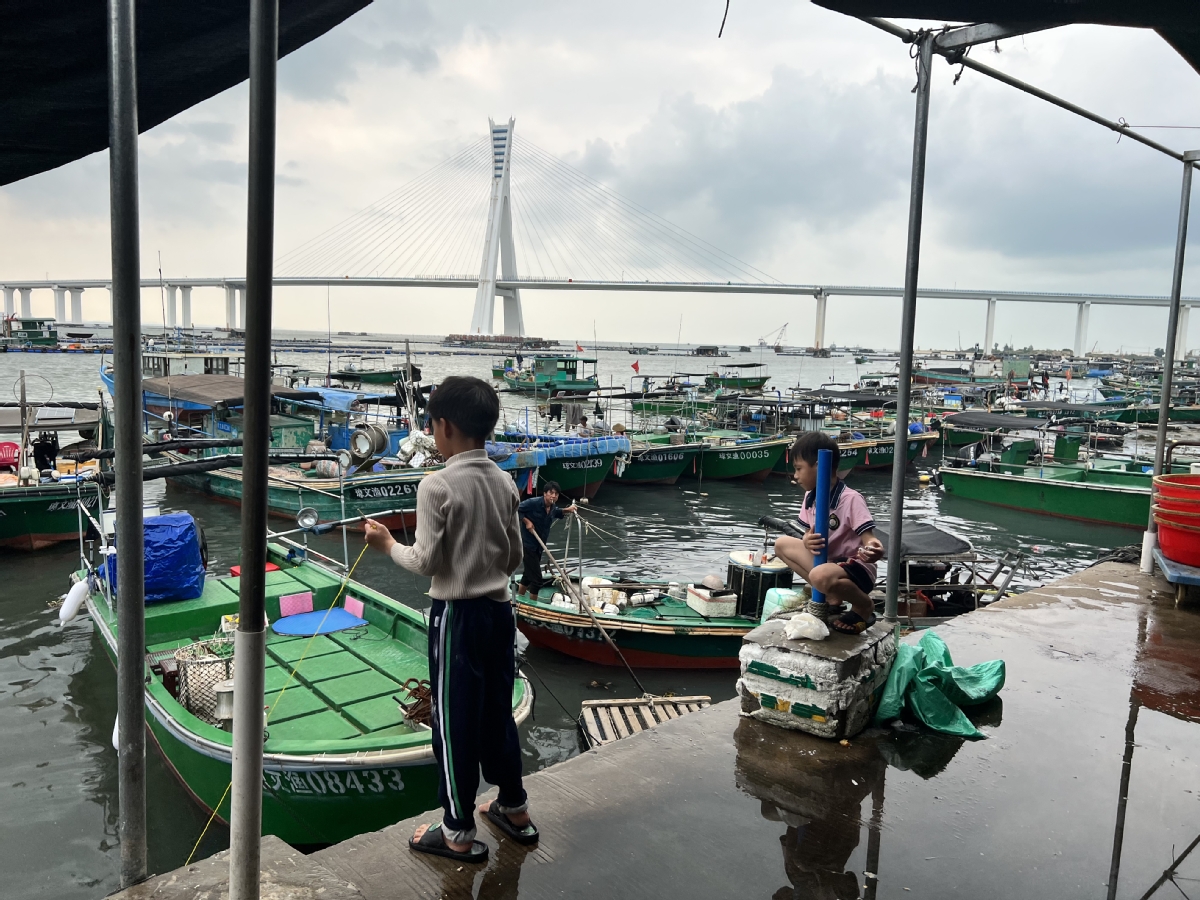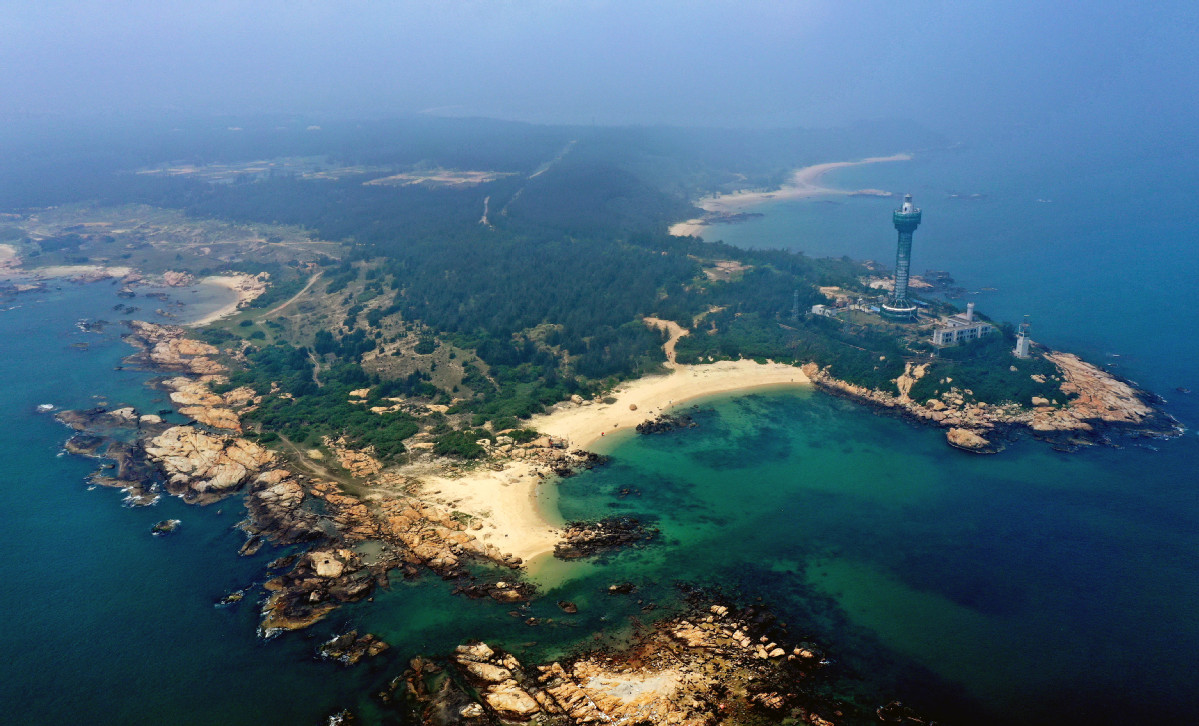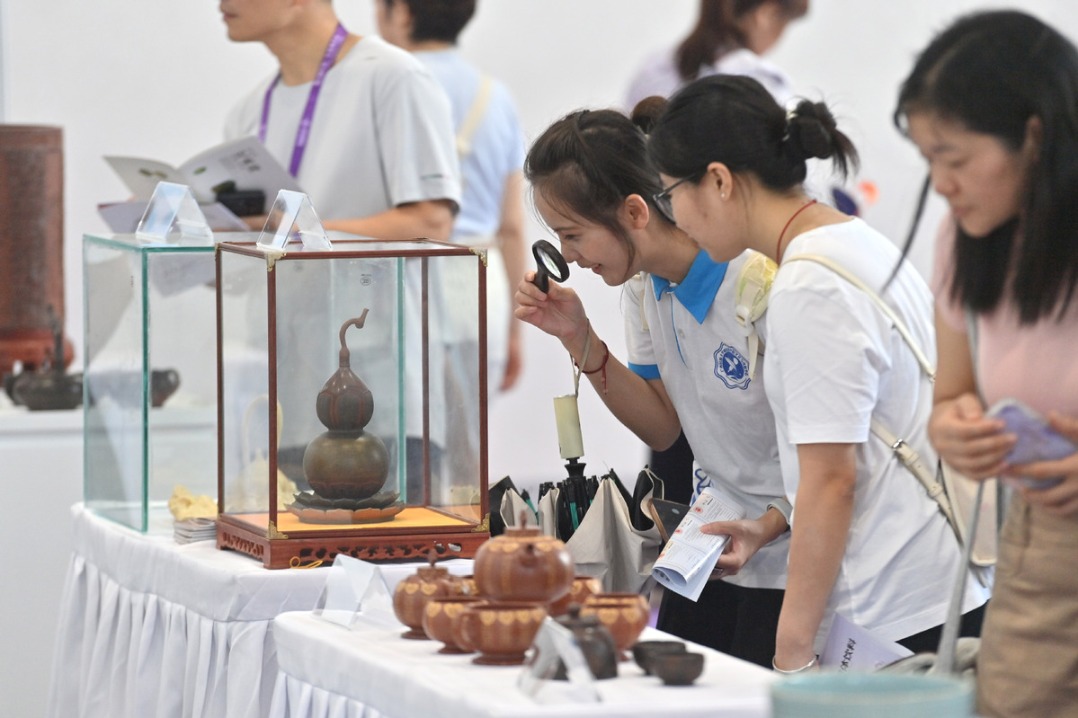In small fishing village, benefits of giant FTP showing themselves


Puqian township of Hainan province becoming tropical trade powerhouse
HAIKOU — Yang Jianling watches the tide rise and fall, and she knows the perfect time for a good harvest from the sea.
At the age of 47, she has seldom left the seashore, where she grew up watching her parents anchor or sail, except when hauling buckets of bream and croakers to fish markets or a few necessary trips away from home.
Her hometown, Puqian township, is perched on the northeast tip of the island province of Hainan, which is building the world's largest free trade port. Yang's family, now with her husband and two sons, has made a living out of fishing for generations. "With business getting so good, there is every reason to go on," she said, calling herself an "anchor", a local nickname for fish dealers.
When Yang was young, the farthest market where she sold fish was in the provincial capital Haikou, about 50 kilometers to the west and a 90-minute drive. The opening of a cross-sea bridge in 2019, part of the FTP infrastructure, has cut the time to 20 minutes, giving a solid economic boost to the town, which is already benefiting from Wenchang, the city that administers it and is known for space launches.
On April 13, 2018, China announced a decision to support Hainan by developing the whole island into a pilot free trade zone and steadily promoting the establishment of an FTP with Chinese characteristics.
A master plan was rolled out in June 2020 to build the island into a globally influential and high-level FTP by the middle of the century.
Buoyed by free trade policies, Puqian is renewing traditional fishing and farming industries, taking on a new look with sleek highways and bustling commercial streets, and banking on a bigger travel boom expected with the opening of a scenic highway encircling almost the whole province.
Full-swing construction
Not far from the old port where Yang runs her outdoor booth, a modern fishing port covering a sprawling area of 217 hectares, is under construction.
The new port is designed to accommodate 800 vessels, costing 10 billion yuan ($1.45 billion). Township Party Secretary Xing Yizhi said it aims to become a high-end fisheries processing and trade center in Asia. The port's main structure is scheduled to be completed by the end of this year.
"The port will not only serve local fishermen, but also foreign ships. It will be able to process and trade fish from countries like Singapore, Vietnam and Indonesia after their ships dock here," Xing said.
Hainan FTP is scheduled to initiate independent Customs operations across the whole island by the end of 2025, which means the free flow of foreign cargo, ships and commodities.
The prospects of a busy international port bode well for fishermen. Yang already uses speedy logistics and e-commerce facilities to sell seafood to Fujian and Zhejiang provinces, hours of flight distance away, while still managing to keep the products fresh.
"The fishing port definitely opens up more possibilities," she said. "We have already benefited greatly from Hainan FTP. We have more visitors and buyers. Fish prices are rising, and our lives are better."

Rural vitalization
The FTP has spurred an economic transformation in Hainan. Over the past five years, tourism, modern services, high-tech, and tropical agriculture industries have replaced industries such as real estate to sustain growth. In Puqian, the changes are easy to notice.
The town's Mulan Bay has been a magnet for tourists. Mulantou Lighthouse, once dubbed Asia's tallest, overlooks large swathes of forests, coconut trees and farm fields. Tourists hit scenic roads leading to the lighthouse and often stop to purchase sweet potatoes or watermelons directly from farmers.
Wu Zhong, who runs one of the largest sweet potato-growing businesses in town, is deeply tanned. Wu's sweet potatoes usually come into season from January to May, a few months earlier than other sweet potato varieties due to the warm weather in the tropical province, making it more competitive in the domestic market.
Wu's company contracts 80 hectares of the crop and expects to produce 2 million kilograms this year. The purple skin, proper sweetness, and rich starchiness of the variety make it a hot commodity in the market.
Finding the right cash crop is not easy. Wu started to grow the plant introduced from Japan in 2019. "I hired some local farmers who are good at planting to cultivate this variety. To my great assurance, it was a good harvest, and I remember it very quickly sold out," he said.
Now Wu's company employs around 70 workers every day, and 100 during the busy season. Most are nearby villagers. Zhou Qiongzhen began helping harvest, sort and pack crops for the company in August last year, and makes about 5,000 yuan each month.
"Over the past five years, favorable policies for agriculture have been rolled out, and infrastructure and logistics have been greatly improved, while the sweet potato business has helped increase farmers' incomes," Wu said.
Supported by the township government, Wu said he will expand his business and motivate more farmers to jump on the rural vitalization bandwagon.
"Our sweet potatoes have been sold to Hong Kong. I am looking forward to seeing more opportunities for the development of Hainan's agriculture, and hope more local high-quality agricultural products can be exported to the global market in the wake of the construction of the FTP," Wu said.
Cultural relic conservation
Puqian has been one of the vital commercial hubs of Hainan for goods and personnel transportation since ancient times. Shengli Street has witnessed the town's prosperity.
Just a few minutes' walk from the old port where Yang's booth is located, Shengli Street is known for its old qilou buildings, or arcade houses — multistory structures that integrate Chinese and European architectural styles. Most qilou buildings along the street were built by Chinese businessmen who have traveled to Southeast Asia and returned to the town after making their fortunes starting in 1895.
Zhong Yechun once lived in a two-story qilou. "My family members lived on the second floor and did some businesses such as selling fishery products or wine on the first floor," the 78-year-old recalled.
Zhong's house and many other qilou buildings on Shengli Street were previously in a bad state of disrepair and unfit to live in. However, thanks to the government's financial support, many qilou buildings have been renovated.
"More than 8 million yuan has been invested in renovating the historic street since 2009. More restoration efforts will be made in the future," said Han Chunyan, from the township government.
Thanks to those conservation efforts, the old buildings have now been restored to their former glory, while the street has become a unique cultural icon, playing a crucial role in boosting the town's tourism industry.
"We have seen an increasing number of tourists taking photos, and many movies are filmed here," Han said.
Lin Daofang, 77, lives in an old house in Meilan village constructed by his great-grandfather more than 130 years ago.
"My great-grandfather made a fortune by engaging in the tobacco and alcohol trade in Vietnam. He returned to the village to build this house. It took three years, and more than 200 workers were hired to build this house. Many high-end construction materials were shipped from Vietnam," said Lin, adding that many architects, painters and tourists have visited his house now and then to have a look at its exquisite carvings and decor.
Puqian is also home to Xibei Academy, an educational institute built in 1893.
Covering more than 10,000 square meters, the institute is one of Hainan's largest and most well-preserved ancient academies. In 2019, the academy was listed as a State key protected unit.
"The academy was built by our elders in the past, and we really want to keep and reuse the buildings," said Shen Wenlue, vice-headmaster of Wenbei Middle School, which now looks after the academy.
So far, about 20 million yuan has been pooled to renovate the old academy. The township government is considering introducing social capital to restore and reuse the institution, said Chen Wenwang, deputy head of the township government.
"The construction of the FTP not only drives economic growth, but also raises people's awareness of cultural relics protection at all levels. We will continue to step up conservation efforts while pursuing development," Chen added.



































